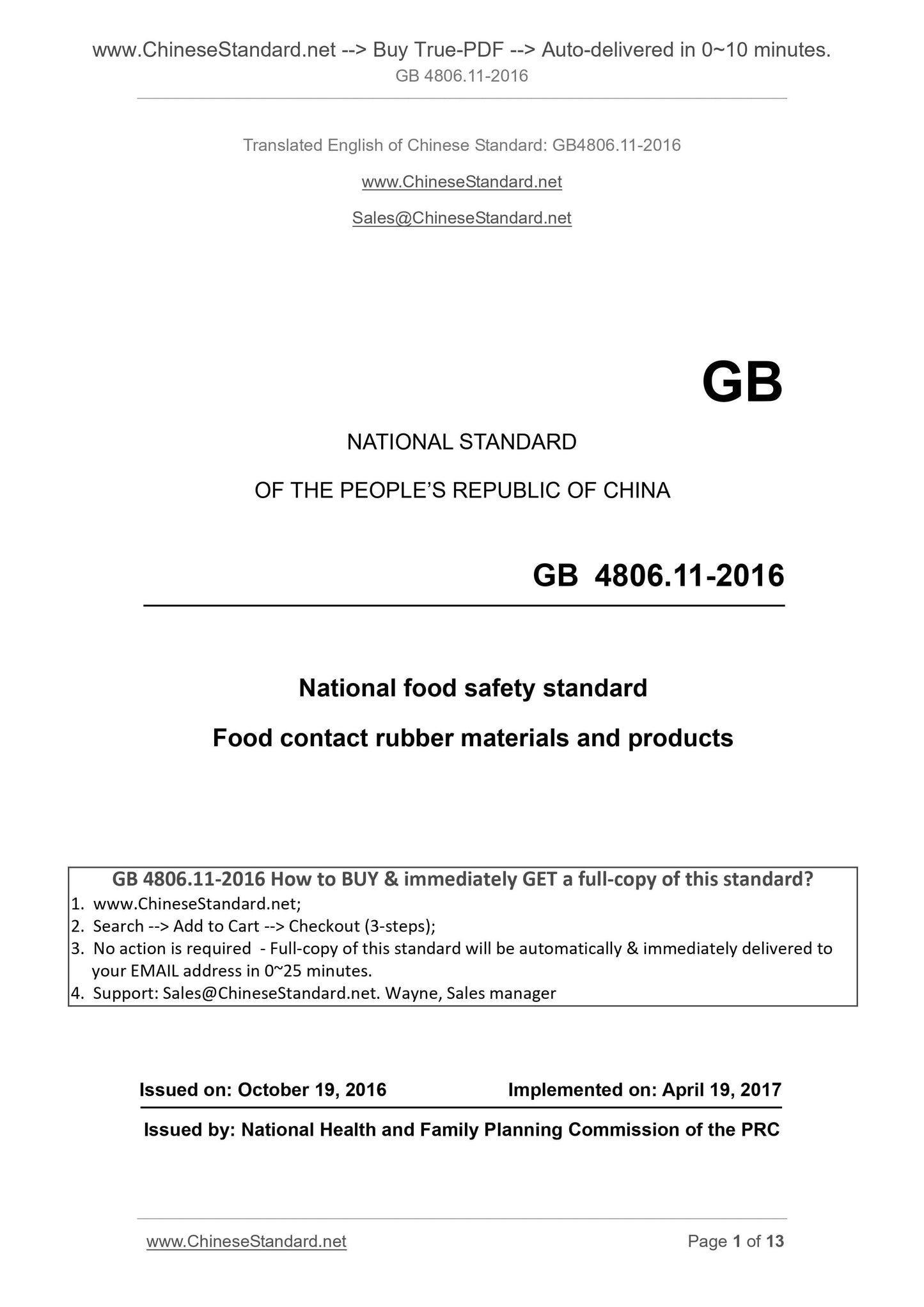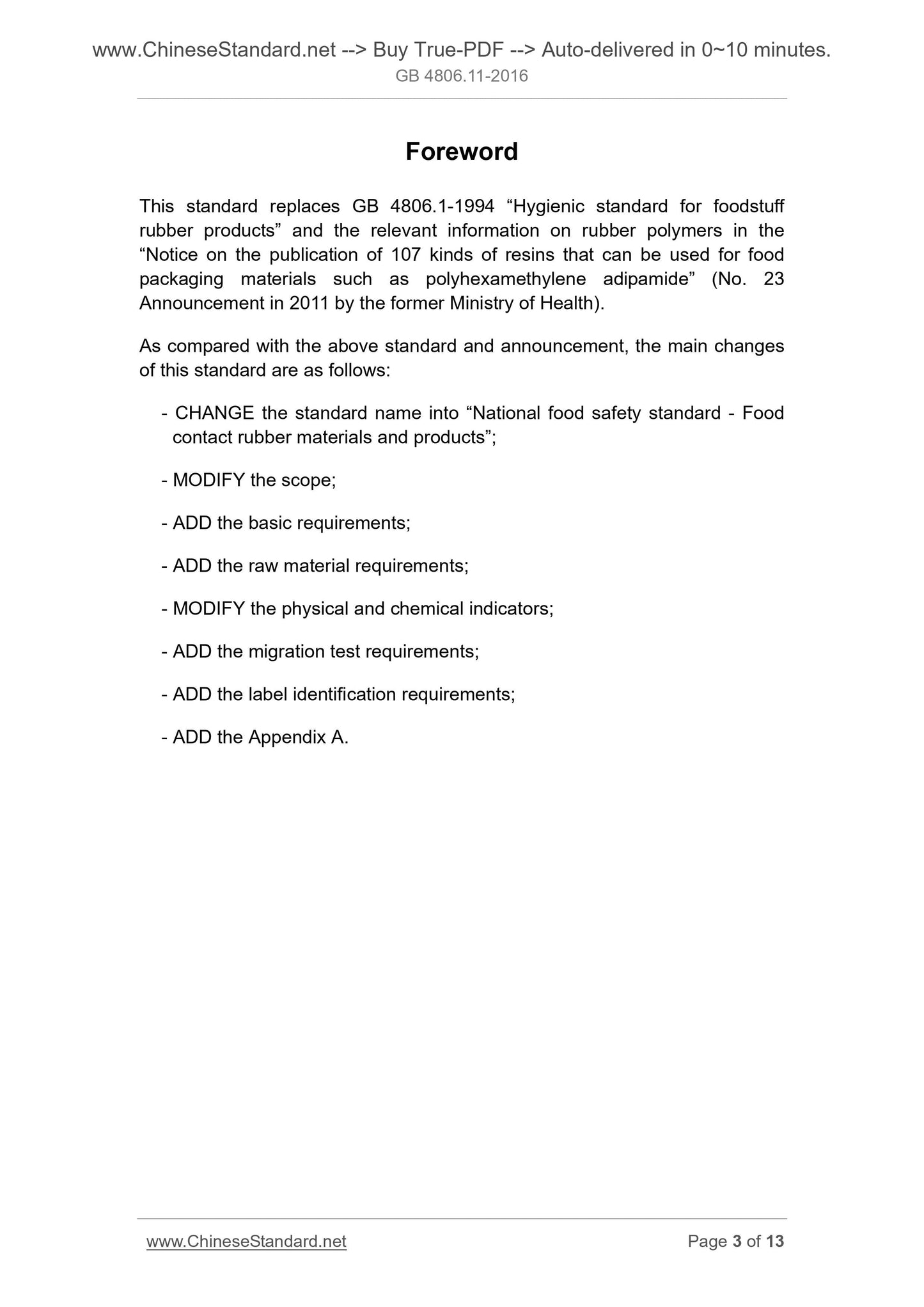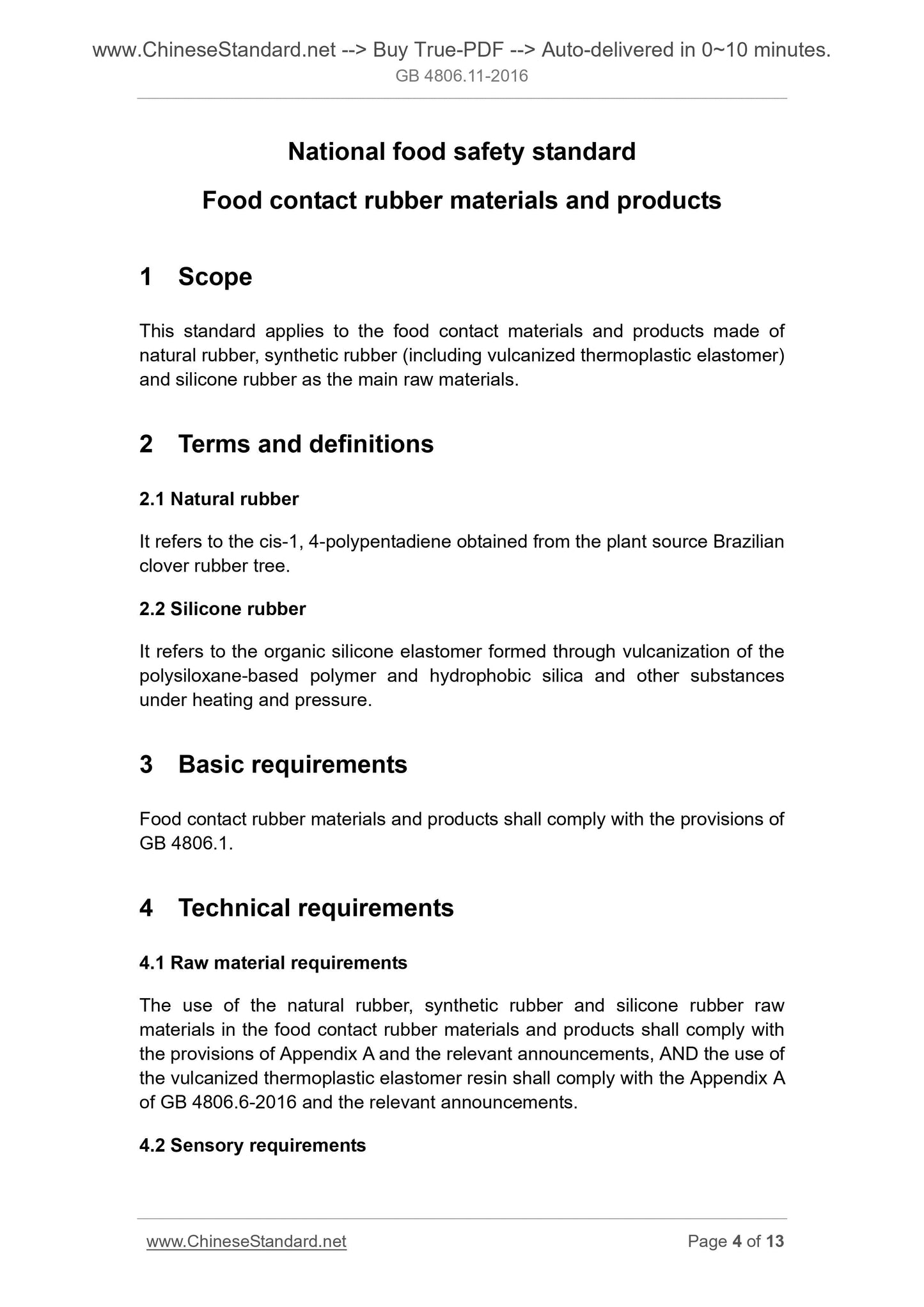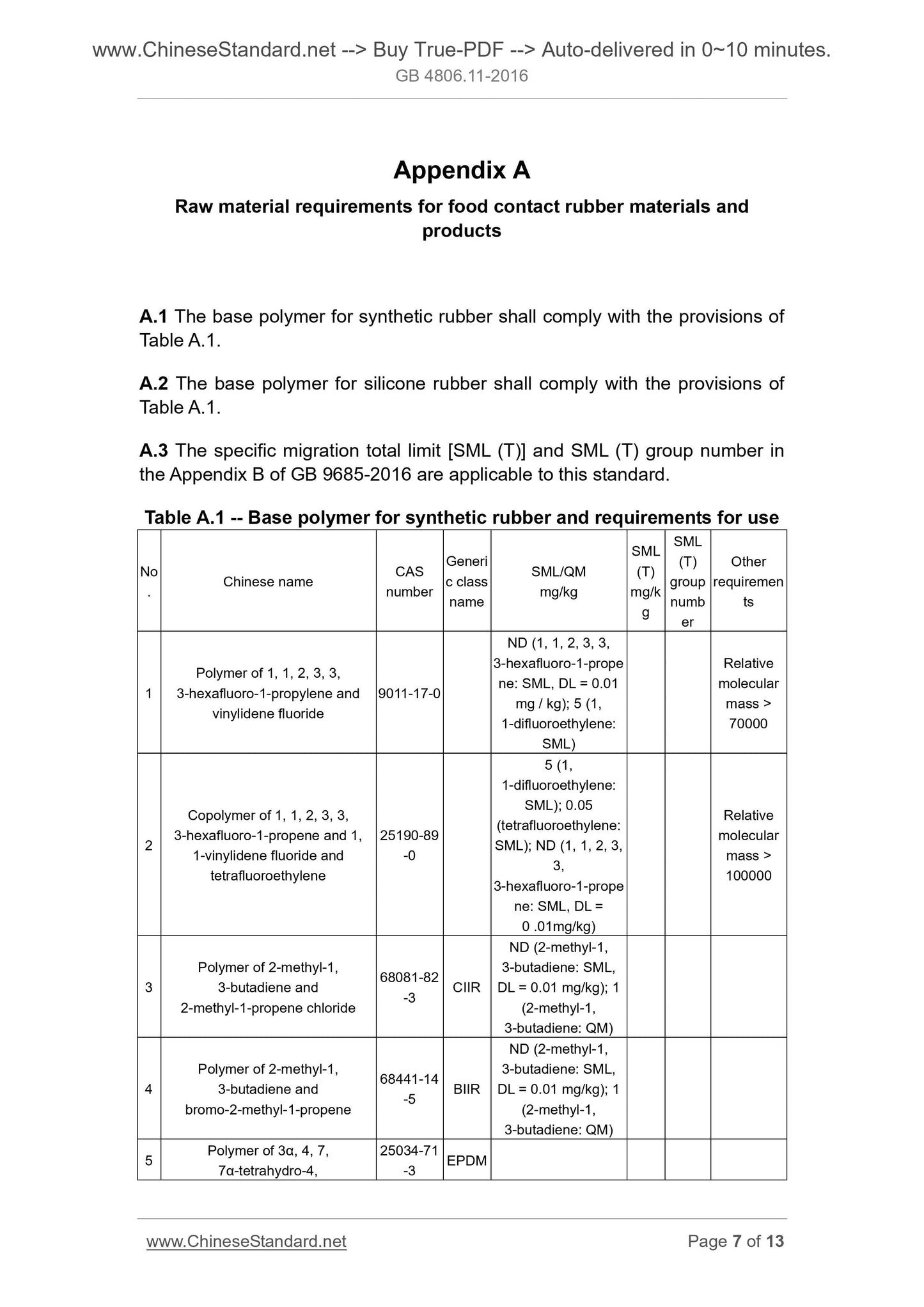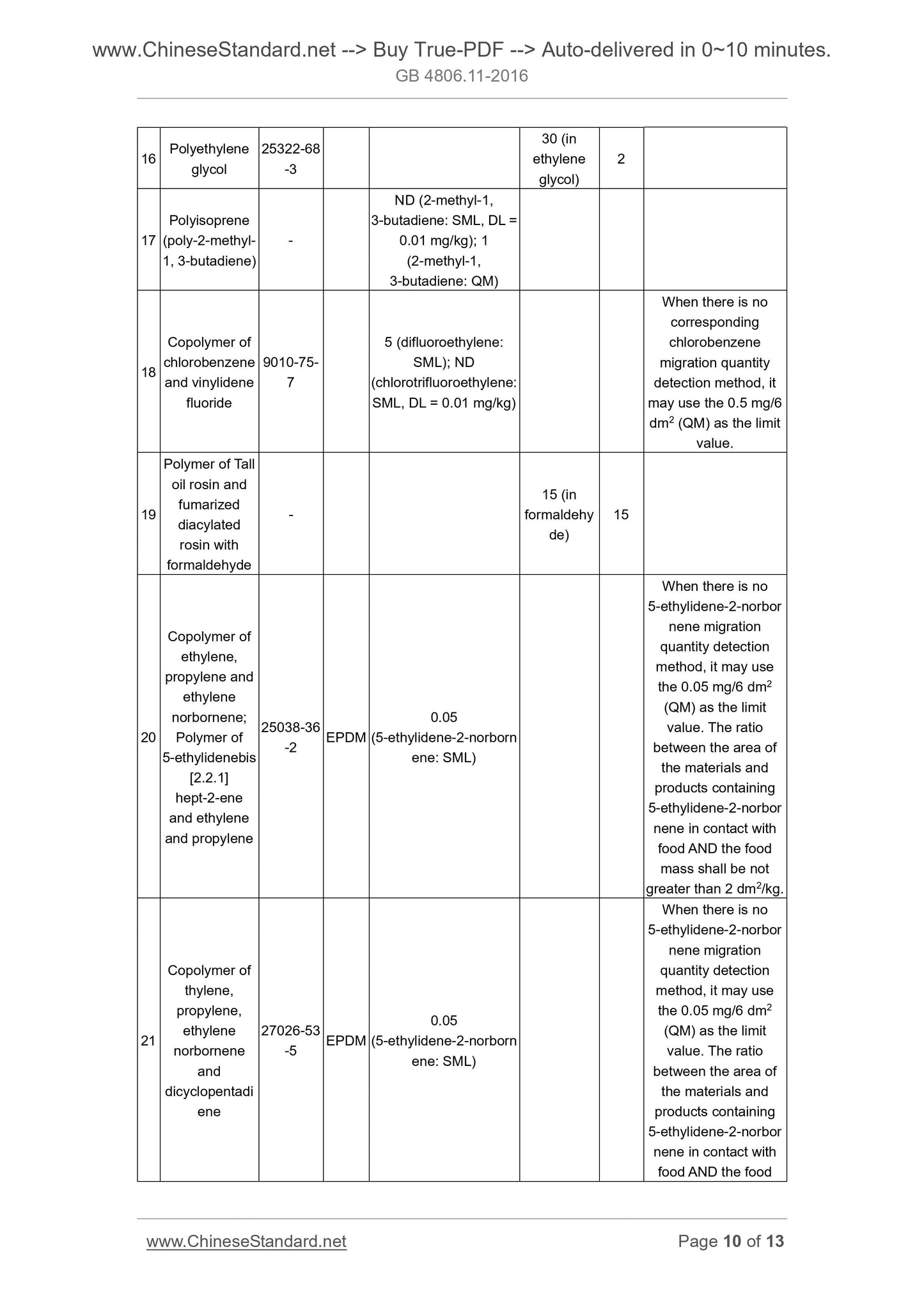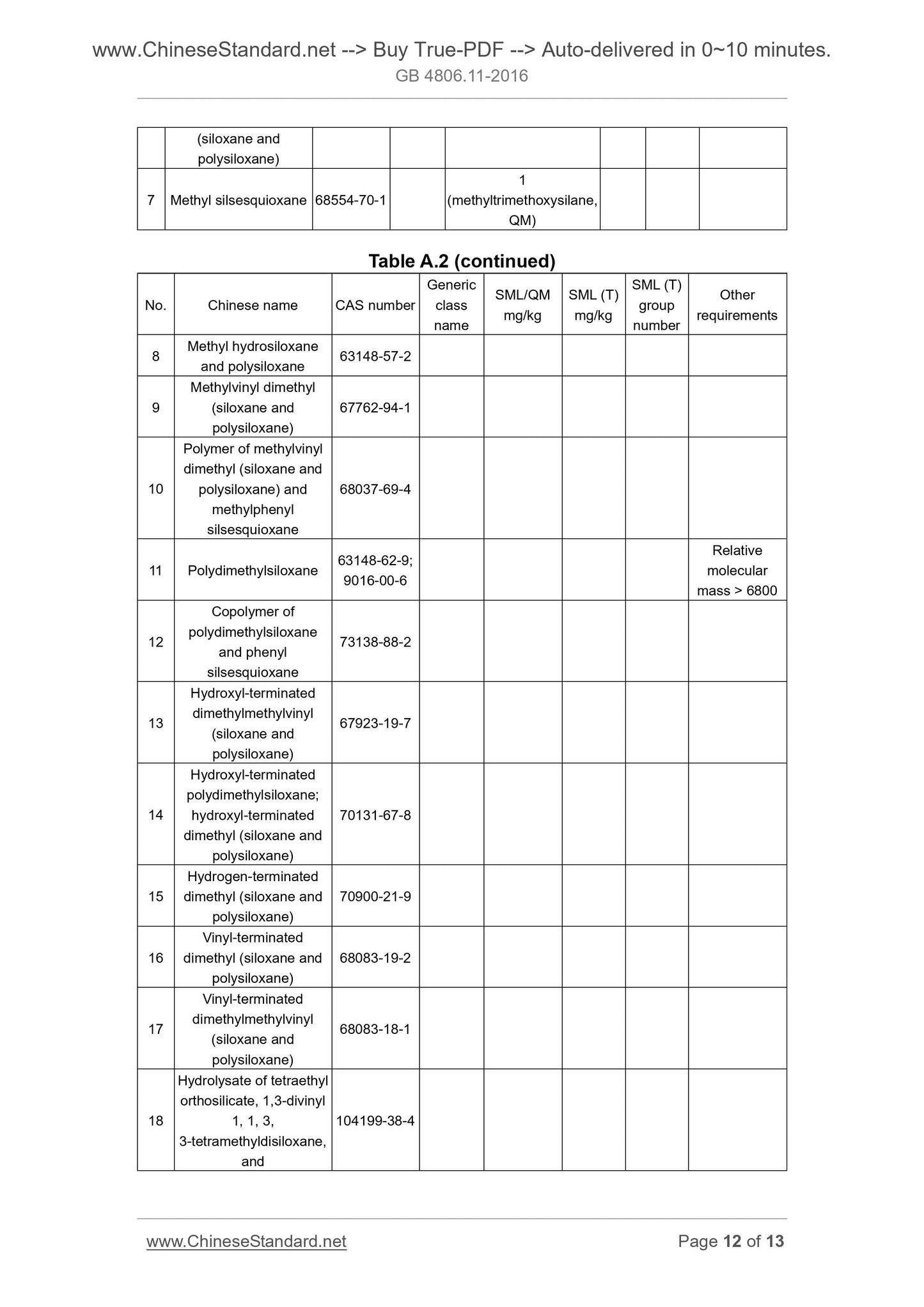1
/
of
7
PayPal, credit cards. Download editable-PDF & invoice in 1 second!
GB 4806.11-2016 English PDF
GB 4806.11-2016 English PDF
Regular price
$70.00
Regular price
Sale price
$70.00
Unit price
/
per
Shipping calculated at checkout.
Couldn't load pickup availability
GB 4806.11-2016: National food safety standard - Food contact rubber materials and products
Delivery: 9 seconds. Download (and Email) true-PDF + Invoice.Get Quotation: Click GB 4806.11-2016 (Self-service in 1-minute)
Newer / historical versions: GB 4806.11-2016
Preview True-PDF
Scope
This standard applies to the food contact materials and products made ofnatural rubber, synthetic rubber (including vulcanized thermoplastic elastomer)
and silicone rubber as the main raw materials.
Basic Data
| Standard ID | GB 4806.11-2016 (GB4806.11-2016) |
| Description (Translated English) | National food safety standard - Food contact rubber materials and products |
| Sector / Industry | National Standard |
| Classification of Chinese Standard | C53 |
| Word Count Estimation | 12,194 |
| Date of Issue | 2016-10-19 |
| Date of Implementation | 2017-04-19 |
| Older Standard (superseded by this standard) | GB 4806.1-1994 Partially |
| Regulation (derived from) | State Health and Family Planning Commission Notice No.1516 of 2016 |
| Issuing agency(ies) | National Health and Family Planning Commission of the People's Republic of China, State Food and Drug Administration |
Share
